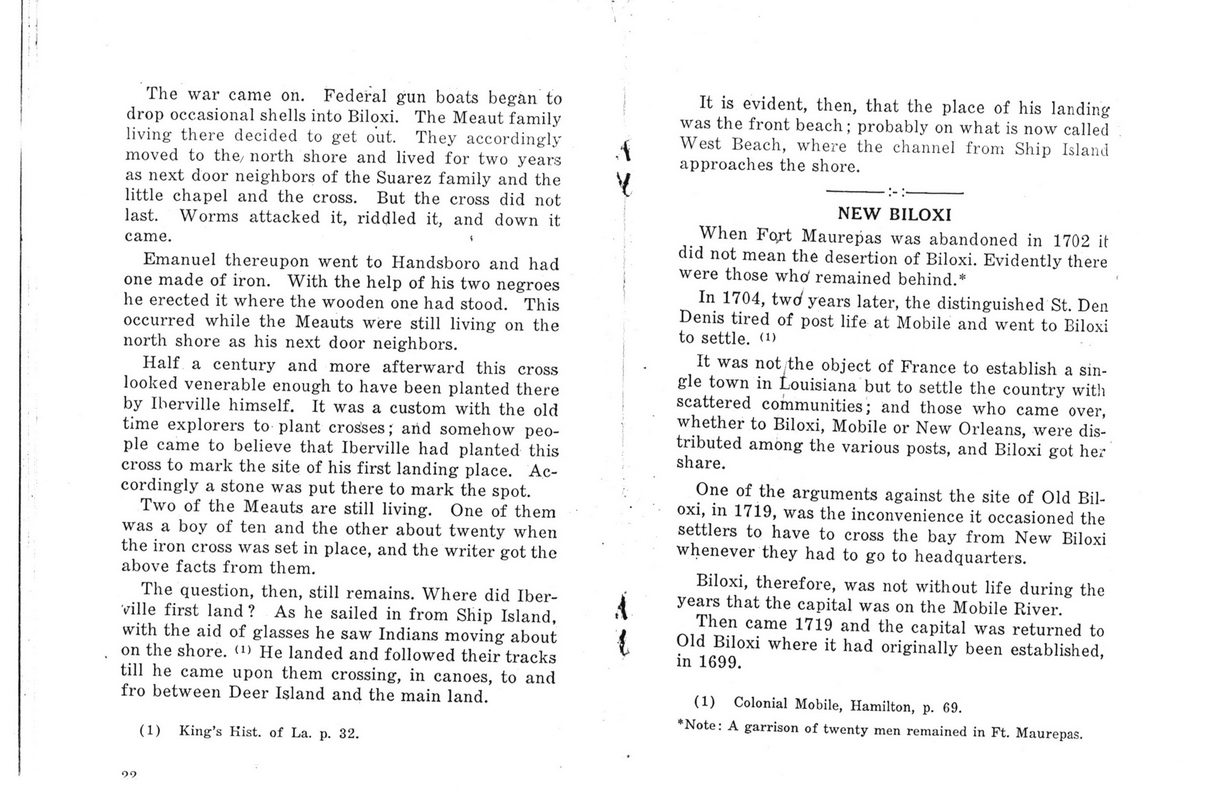This text was obtained via automated optical character recognition.
It has not been edited and may therefore contain several errors.
The war came on. Federal gun boats began to drop occasional shells into Biloxi. The Meaut family living there decided to get out. They accordingly moved to the/ north shore and lived for two years as next door neighbors of the Suarez family and the little chapel and the cross. But the cross did not last. Worms attacked it, riddled it, and down it came. ' Emanuel thereupon went to Handsboro and had one made of iron. With the help of his two negroes he erected it where the wooden one had stood. This occurred while the Meauts were still living on the north shore as his next door neighbors. Half a century and more afterward this cross looked venerable enough to have been planted there by Iberville himself. It was a custom with the old time explorers to plant crosses; and somehow people came to believe that Iberville had planted this cross to mark the site of his first landing place. Accordingly a stone was put there to mark the spot. Two of the Meauts are still living. One of them was a boy of ten and the other about twenty when the iron cross was set in place, and the writer got the above facts from them. The question, then, still remains. Where did Iberville first land? As he sailed in from Ship Island, with the aid of glasses he saw Indians moving about on the shore. ll) He landed and followed their tracks till he came upon them crossing, in canoes, to and fro between Deer Island and the main land. (1) King’s Kist. of La. p. 32. 99 It is evident, then, that the place of his landing was the front beach; probably on what is now called West Beach, where the channel from Ship Island approaches the shore. NEW BILOXI When Fojt Maurepas was abandoned in 1702 it did not mean the desertion of Biloxi. Evidently there were those whd remained behind.* In 1704, tw<y years later, the distinguished St. Den Denis tired of post life at Mobile and went to Biloxi to settle. (1> It was not the object of France to establish a single town in Louisiana but to settle the country with scattered communities; and those who came over, whether to Biloxi, Mobile or New Orleans, were distributed among the various posts, and Biloxi got hex* share. One of the arguments against the site of Old Biloxi, in 1719, was the inconvenience it occasioned the settlers to have to cross the bay from New Biloxi whenever they had to go to headquarters. Biloxi, therefore, was not without life during the years that the capital was on the Mobile River. Then came 1719 and the capital was returned to Old Biloxi where it had originally been established, in 1699. (1) Colonial Mobile, Hamilton, p. 69. *Note: A garrison of twenty men remained in Ft. Maurepas.

Biloxi Historical-Sketch---Bremer-(13)